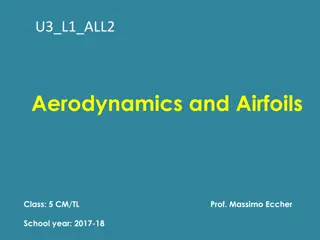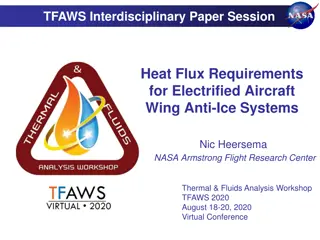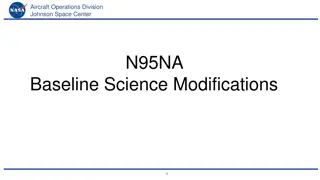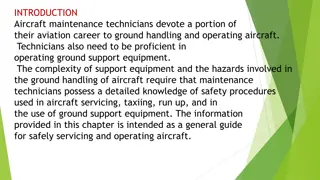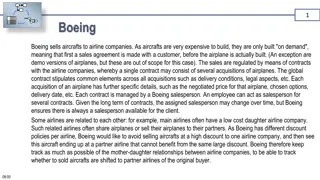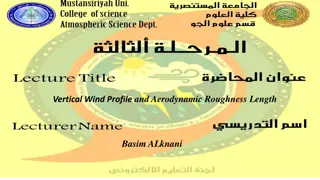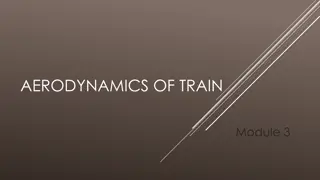Aerodynamic Drag in Aircraft
Aerodynamic drag is a resistance force that opposes an aircraft's motion through the air. It is generated by every part of the airplane and depends on factors like object geometry, surface roughness, and air velocity. Factors affecting drag include object shape, motion through the air, and air properties, influencing the drag force acting on an aircraft. Drag varies with the surface roughness of an object as well as the relative velocity between the object and the air. Understanding these factors is crucial in aircraft design and performance optimization.
Download Presentation

Please find below an Image/Link to download the presentation.
The content on the website is provided AS IS for your information and personal use only. It may not be sold, licensed, or shared on other websites without obtaining consent from the author.If you encounter any issues during the download, it is possible that the publisher has removed the file from their server.
You are allowed to download the files provided on this website for personal or commercial use, subject to the condition that they are used lawfully. All files are the property of their respective owners.
The content on the website is provided AS IS for your information and personal use only. It may not be sold, licensed, or shared on other websites without obtaining consent from the author.
E N D
Presentation Transcript
Drag As the airplane moves through the air, there is another aerodynamic force present The air resists the motion of the aircraft and the resistance force is called drag Drag is the Aerodynamic force that opposes an aircraft's motion through the air.
Drag Drag is generated by every part of the airplane (even the engines). Drag acts in the direction opposed to the motion. And directed along and opposed to the flight direction.
Like lift: There are many factors that affect the magnitude of the the shape of the aircraft, the "stickiness" of the air, and the velocity of the aircraft. drag force including drag acts through the aircraft center of pressure.
Factors that affect drag As with aircraft lift, there are many factors that affect drag. We can group these factors into: (a) Those associated with the object, (b) Those associated with the motion of the object through the air, (c) Those associated with the air itself
A :The Object Geometry has a large effect on the amount of drag generated by an object. As with lift, the drag depends linearly on the size of the object moving through the air. The cross-sectional shape of an object determines the form drag created variation around the object. by the pressure
If we think of drag as aerodynamic friction, The amount of drag depends on the; 1-surface roughness of the object. 2- A smooth, waxed surface produces less drag than a roughened surface.
B: Motion of the Air Drag is associated: with the movement of the aircraft through the air, So drag depends on the velocity of the air. Like lift, drag actually varies with the square of the relative velocity between the object and the air.
The inclination of the object to the flow also affects the amount of drag generated by a given shaped object. If the object moves through the air at speeds near the speed of sound, shock waves are formed on the object which create an additional drag component called wave drag.
The motion of the object through the air also causes boundary layers to form on the object. A boundary layer is a region of very low speed flow near the surface which contributes to the skin friction.
C: Properties of the Air Drag depends directly on the mass of the flow going past the aircraft. The drag also depends in a complex way on two other properties of the air: its viscosity and its compressibility.
We can gather all of this information on the factors that affect drag into a single mathematical equation called the Drag Equation. With the drag equation we can predict how much drag force is generated by a given body moving at a given speed through a given fluid.







